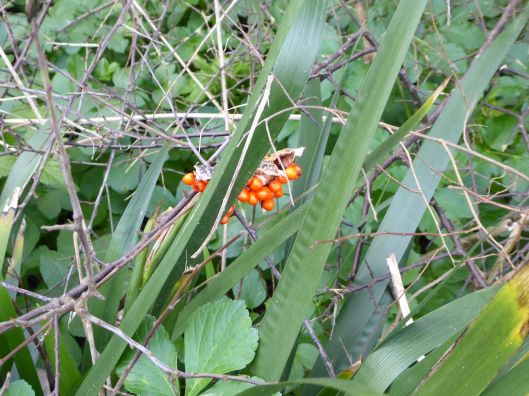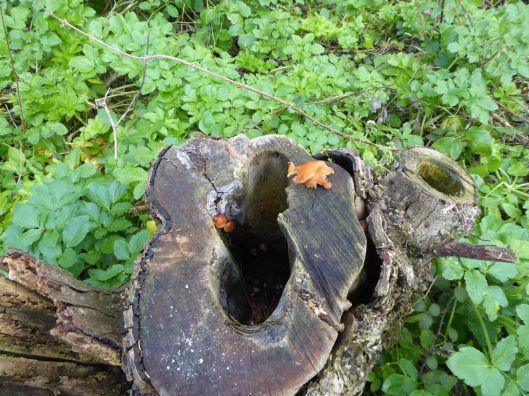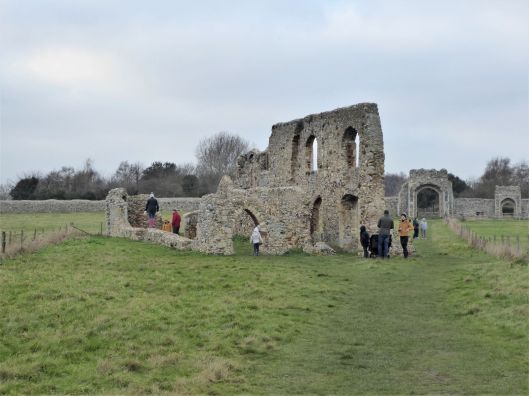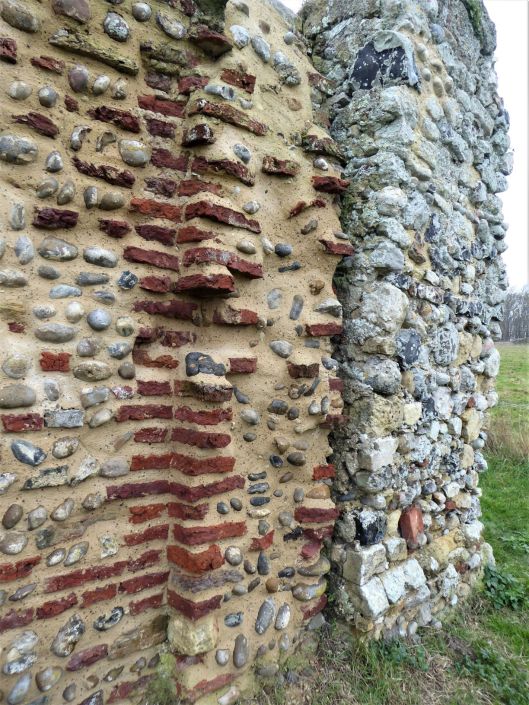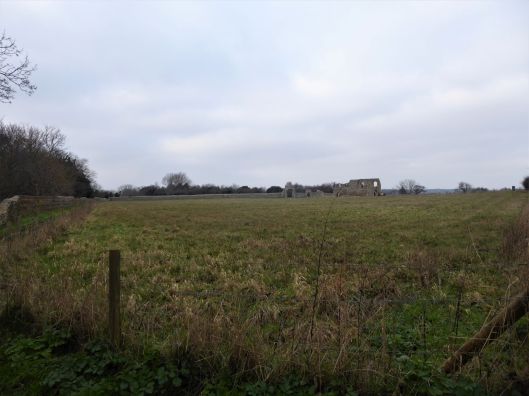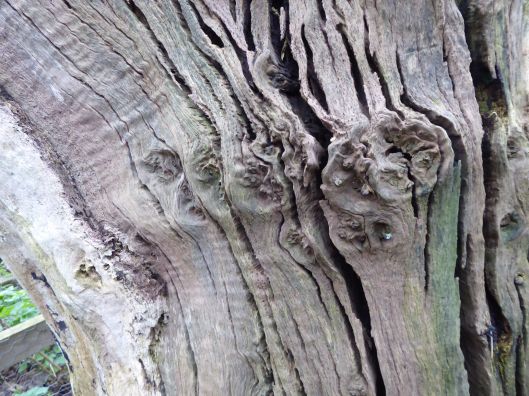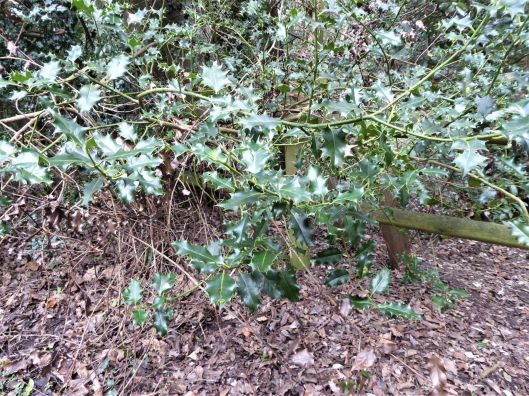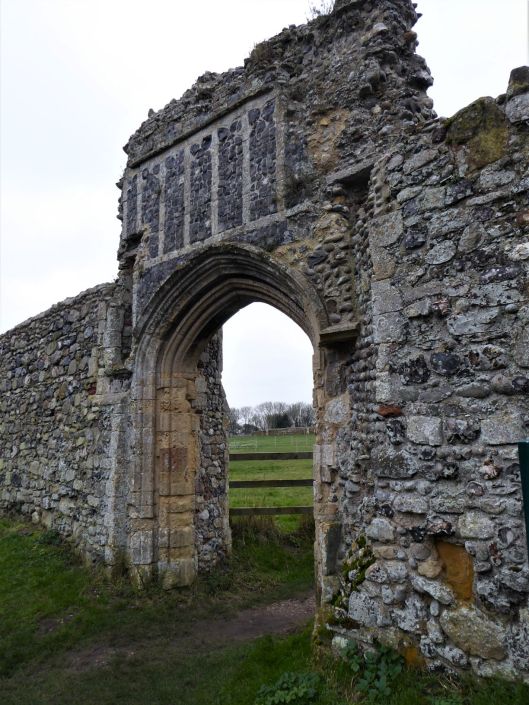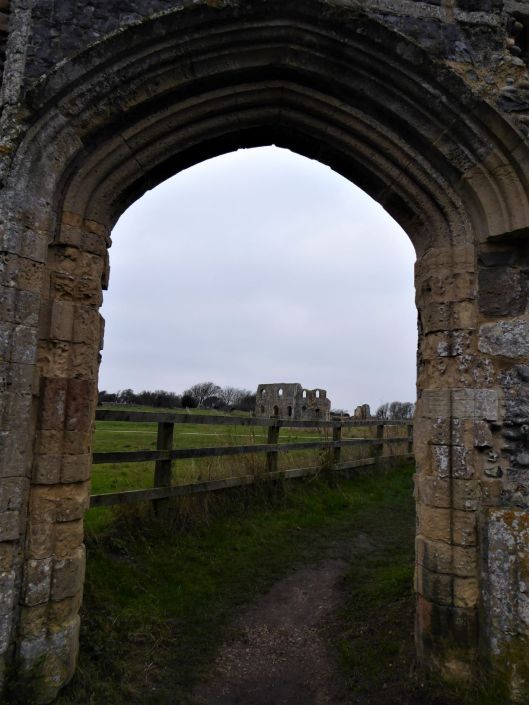Tags
Alexanders, conservation, Dunwich, Dunwich Greyfriars Trust, erosion, fungus, Greyfriars Monastery, Greyfriars Wood, Holly, ruins, stinking iris, Suffolk, sycamore, trees, walking
I hope you all had a merry Christmas and that you will have a blessed and healthy new year. I apologise if I haven’t visited your sites/blogs recently but I will endeavour to do so very soon.
I would like to thank all my kind followers, readers and visitors for continuing to support me despite very few posts during the past couple of years. I am just embarking on my 7th year as a WordPress blogger, which amazes me and dismays me at the same time. What on earth have I achieved in those six years since January 2014? Not much, I think!
ooooOOoooo
My daughter Alice and her husband Phil came to stay with us this Christmas and Alice brought her cat Mona with her as well. Mum came for lunch on both Christmas Day and Boxing Day so our house was nicely full of family. I took Mum to Midnight Mass at Eye church on Christmas Eve getting back home at 1.15 am. Next morning I went to our church at Rumburgh and helped Richard get it ready as it was our turn to hold the Christmas morning Communion service this year. I also stayed for the service and helped tidy up afterwards. I had put the turkey in the oven to roast before leaving for church and by the time I got home again it was time to take it out. Alice had prepared all the vegetables for me while I was out so I had no trouble getting on with the meal on my return. Boxing Day was easier as I didn’t have to go out in the morning but I had just as much food to cook. By the time we had finished lunch and I had made us tea and coffee I was ready for a rest. Richard did a wonderful job clearing the table and doing all the washing-up and dishwasher loading and unloading on both days! Phil went back home on Friday 27th but Alice and Mona stayed on until the following Monday which was lovely! I was so happy having both my daughters with me this Christmas! We all went out for lunch in Halesworth on Saturday and then drove to the seaside at Southwold. We walked the whole length of the promenade and back again and then to the end of the pier and back before returning to the car and going home. It was very busy with other walkers, chilly and breezy, fine and dry and we were glad of the walk. I took no photographs.
I spent most of Monday and Tuesday shopping for Mum and us, doing the washing and putting the things back into the spare room that had been removed to make room for our guests. Richard and I both felt we needed to get out of the house again but wanted to walk somewhere different. On New Year’s Day we decided that Dunwich Heath would be a good place to go and thought that it would have less mud and puddles to wade through than most walks. However, when we got there the crowds were so great that there was nowhere to park and a queue had formed so we turned round and drove to the beach car park. We found a space, though that car park was very full too.
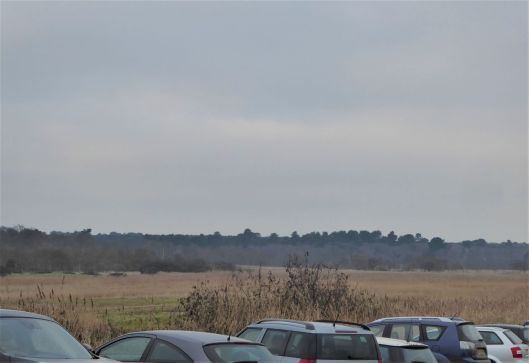
Here is a view of Dingle Marshes over the tops of parked cars.
We started off by walking down to the beach to look at the sea. The beach was quite busy with walkers and dogs and the wind off the sea was biting. We didn’t stay long.
We left the beach and walked up towards the main part of Dunwich village. We turned off the lane and took a footpath that climbed up through Greyfriars Wood. At the top of the incline the path then went along the edge of the cliff.
Most of the East Anglian coastline is eroding fairly quickly. After every storm we expect to find that large chunks of the cliff have broken off and fallen onto the beach. Our friend Cordelia’s daughter has written a book about what it is like to live in a house on the edge of a cliff in Suffolk. The book is called ‘The Easternmost House’ and is available in paperback and on Kindle.

I always like to see what plants are growing wherever I walk, as you know. This is Stinking Iris (Iris foetidissima )
This plant has many names; Roast-beef Plant, Gladdon or Gladwyn, Bloody Bones, Blue Devil, Dragon Flower, Dagger Flower are a few of them. If the leaves are rubbed they give off an odour like stale, raw beef. The flowers are pale mauve/purple, sometimes with some yellow colour as well and are veined with darker lines. It comes into its own in the autumn and winter when the seed pods burst open and reveal these glorious orange seeds. The leaves are evergreen, typical iris leaves. The name Gladdon or Gladwyn comes from the Old English word for a sword.
Woods near the coast are very rare as trees do not usually fare well in salt-laden air and suffer in the wind and storms. This mixed woodland was planted in the eighteenth century by the family who owned the village at that time. The Dunwich Greyfriars Trust which manages the wood today say that only Sycamore trees (Acer pseudoplatanus) are hardy enough to grow on the side of the wood nearest the cliff edge and that there are no young trees in the wood. They are trying to overcome the latter by fencing off areas where large trees have fallen and open glades have appeared. The fences prevent deer from destroying all the seedlings and saplings that will appear in the sunlight and it is to be hoped that the wood will begin to regenerate.
All that is left of the 13th/14th century monastery are these ruins, thought to be the refectory at the southern end of the complex. The cloisters, with accommodation for monks and visitors, and an enormous church were further to the north and were all destroyed during the Dissolution of the Monasteries. The nave and chancel of the church together were about 58 metres long and up to 17 metres wide (190 feet 3.5 ins x 55 feet 9 ins). There is a perimeter wall around the site of the monastery which was built sometime after the main buildings were constructed and has been repaired and rebuilt many times in the intervening years. There were three gates into the complex; two which still stand on the western side allowed access to the main road that ran into and away from the medieval town of Dunwich. The third, now lost to the sea gave access directly into the town with its large port which was also lost centuries ago.
The Dunwich Greyfriars Trust work hard conserving what they can of these ruins. They have capped off most of the walls to prevent rain and frost damage. If you look carefully at one of the photos in the slideshow you will see a sign asking visitors not to climb on the ruins. You can also see in my other photos how much notice the visitors take of the sign!

The perimeter wall comes to an end here at the cliff edge. Much of this part of the wall is original 14th/15th century work and hasn’t been rebuilt. Eventually the whole monastery complex will end up in the sea.
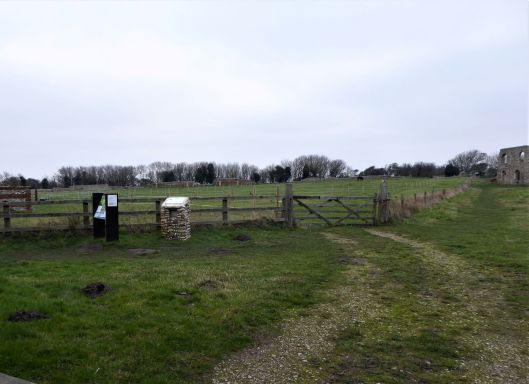
We stood in the main gateway and looked across the area that had once been monastery land. A pony now keeps the grass in order.

A very nice example of flushwork over the gateway
This plant is an ancient introduction, probably at the time of the Roman occupation. Its unusual name refers to its Macedonian origin, Alexander the Great’s birthplace. It is wholly edible and the name Smyrnium is from the Greek word for myrrh and refers to its myrrh-like taste.The leaves can be made into a white sauce or used as a herb. The young stems can be cooked and eaten like asparagus, the flowerbuds may be used in salads and the roots cooked as a substitute for parsnips. I read that an old Irish recipe lists alexanders, watercress and nettles as ingredients for ‘Lenten pottage’. In the 17th century its black seeds were sold in apothecaries’ shops as Macedonian parsley seeds and Nicholas Culpeper the herbalist listed many uses for it including the power to cure not only flatulence but snakebite too! Until recently Alexanders was only to be found in the south and east of Britain and close to the milder coast. However, I have noticed its spread inland and northwards of late.
The Greyfriars Trust have been trying to manage the spread of Alexanders in the wood. It grows so densely it prevents seeds from germinating and smothers other plants. We have had a mild winter so far with some frosts that have melted by midday and no snow as yet. We have had lots of rain and so many plants have continued growing through the autumn and winter and plants, like Alexanders that died after flowering in the early summer have new plants growing from seed already.
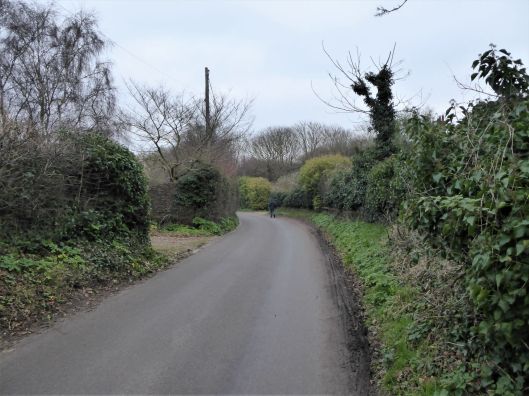
This is the lane that passes along next to the monastery wall and enters what is left of the ‘town’ of Dunwich.

This is near where we first entered the wood at the beginning of our walk. You see how Alexanders is spreading everywhere.

Dunwich village. Lots of cars parked in the road and many of the cars’ passengers are probably in the ‘The Ship’, the inn with the tall chimneys just beyond the black car.
I am indebted to the excellent website belonging to the Dunwich Greyfriars Trust for much of the information in this post. My other reference books have been the Reader’s Digest Field Guide to the Wild Flowers of Britain, Reader’s Digest Field Guide to the Trees and Shrubs of Britain, Culpeper’s Colour Herbal published by W Foulsham and Company Limited, Collins Complete Guide to British Wild Flowers, Collins Complete Guide to British Trees, Flora Brittanica by Richard Mabey, Vickery’s Folk Flora and Harrap’s Wild Flowers. The photographs are all my own.





